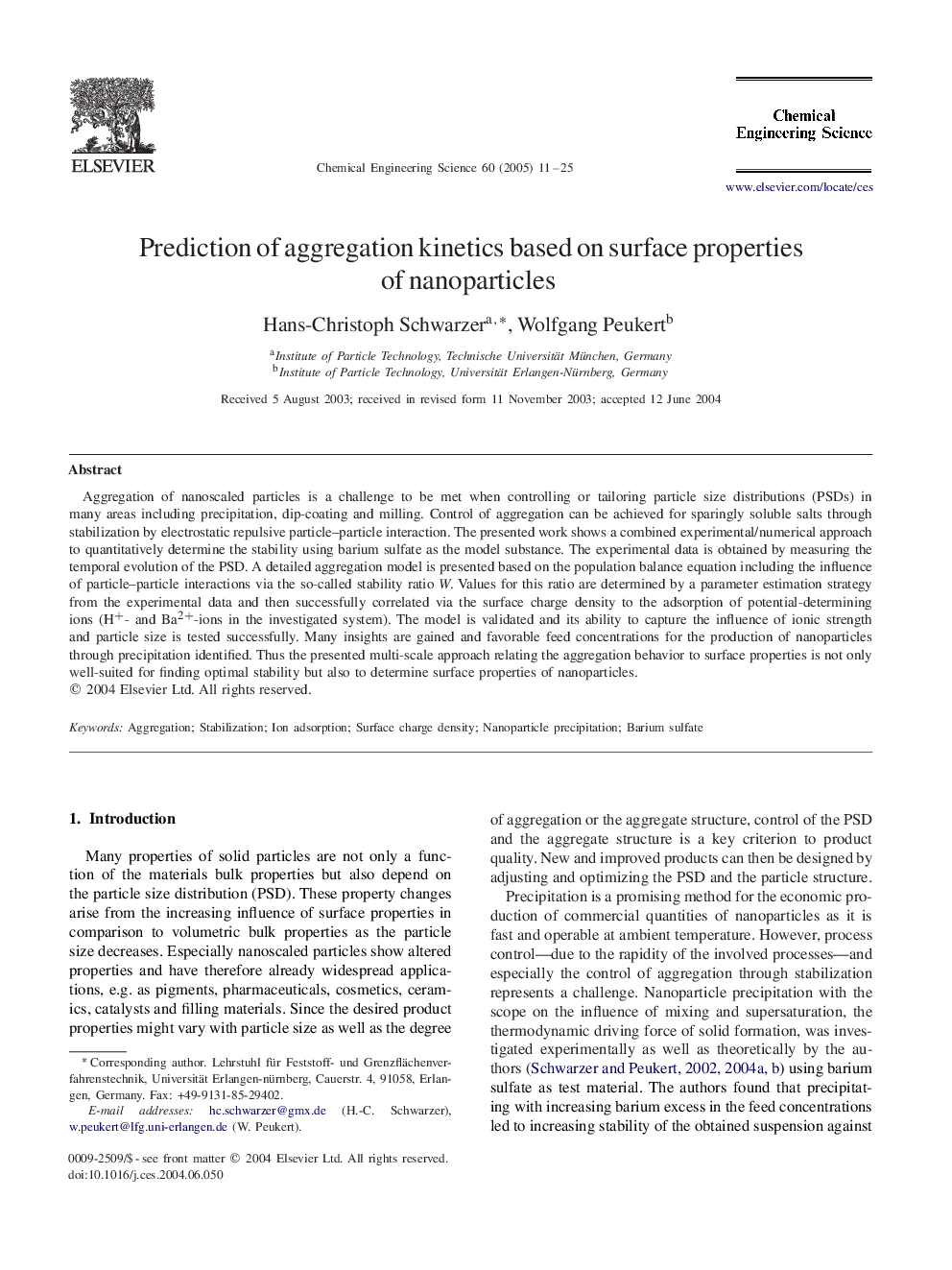| Article ID | Journal | Published Year | Pages | File Type |
|---|---|---|---|---|
| 10263790 | Chemical Engineering Science | 2005 | 15 Pages |
Abstract
Aggregation of nanoscaled particles is a challenge to be met when controlling or tailoring particle size distributions (PSDs) in many areas including precipitation, dip-coating and milling. Control of aggregation can be achieved for sparingly soluble salts through stabilization by electrostatic repulsive particle-particle interaction. The presented work shows a combined experimental/numerical approach to quantitatively determine the stability using barium sulfate as the model substance. The experimental data is obtained by measuring the temporal evolution of the PSD. A detailed aggregation model is presented based on the population balance equation including the influence of particle-particle interactions via the so-called stability ratio W. Values for this ratio are determined by a parameter estimation strategy from the experimental data and then successfully correlated via the surface charge density to the adsorption of potential-determining ions (H+- and Ba2+-ions in the investigated system). The model is validated and its ability to capture the influence of ionic strength and particle size is tested successfully. Many insights are gained and favorable feed concentrations for the production of nanoparticles through precipitation identified. Thus the presented multi-scale approach relating the aggregation behavior to surface properties is not only well-suited for finding optimal stability but also to determine surface properties of nanoparticles.
Related Topics
Physical Sciences and Engineering
Chemical Engineering
Chemical Engineering (General)
Authors
Hans-Christoph Schwarzer, Wolfgang Peukert,
